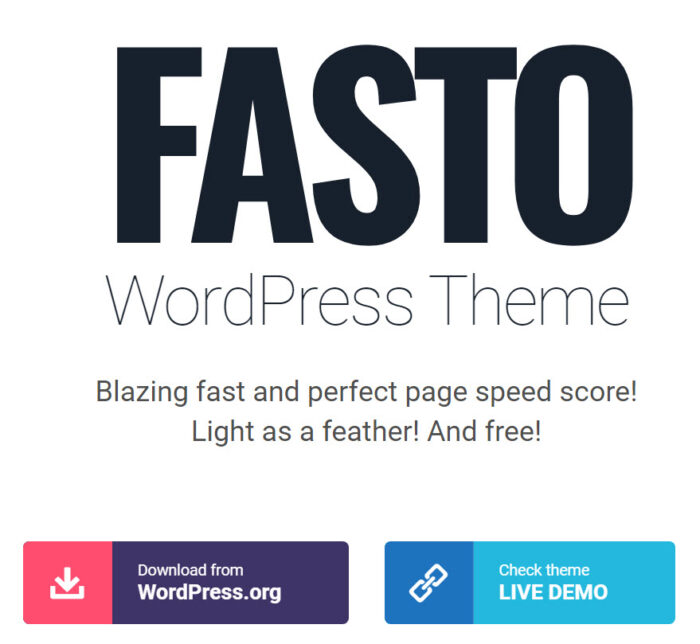When I started out, I was designing blogs in HTML to make a portfolio of image galleries and it sucked. Since then I’ve mostly stuck with WordPress, even though it’s not perfect, it lets me focus on content and works well enough.
But for a *really* nice landing page focused on conversion and sales, well… that’s important once you’ve got traffic. A well-designed landing page can significantly increase conversions for your online business. But with so many landing page builders available, which one should you choose?
I’ve been using clickfunnels for years and it’s fine, but looks kind of spammy. I’m still using the old version though and haven’t upgraded to the more expensive new version, which is probably better. I tried Thrive Themes for a while because I really like how their themes work and look – plus they had built-in marketing copy so I could just edit the text, which was a big help because my copywriting isn’t great.
I recently upgraded my old crappy optimizepress sites and the new optimizepress is pretty amazing, definitely my new favorite. I also use optin monster just for some popups, but I’m phasing that out since optimize press has them built in.
How WordPress Langing page builders Work
So usually you have a wordpress theme or blog that covers all your pages and posts – and most wordpress page builders have an optional theme which isn’t always great. There are also some *wordpress* pagebuilders that are built in (we’ll talk about those later) and a ton of great WP themes are just built using those tools.
So ideally, you can make a quick post or page, or use the built-in pagebuilder to make a fully custom landing page design with whatever you want. In other words, you have *some* fancy pages, in your menu or offers, and then the regular stuff.
Or, you send them off to somebody else’s website where your landing page is actually built and stored. You mostly don’t need to worry about this stuff until you have traffic, and products to sell (online courses, digital downloads etc) or an optin squeeze page – then every boost in conversion can make a big difference so it’s worth finding the BEST thing. Some of my sites get decent traffic, so the easiest, biggest win would be pushing my conversion through my funnels… Right now I get about 100 optins a day, so if I showed them a tripwire or product and I have 1% conversion, and I make a different landing page and push it to 2% – I’ve just doubled my income!
There are also funnel builders where each step in the funnel is linked together with a custom branded style, but that’s easy enough to do just by building the pages and directing the traffic.
Ok, ready? Let’s go into more depth on each of these landing page builders. We’ll include a brief overview of the platform, key features, pros and cons, and pricing details.
ClickFunnels
Overview: ClickFunnels is an all-in-one tool designed to help you create highly converting sales funnels. It simplifies the entire sales and marketing funnels process for all types of businesses and services.
Key Features:
- Easy drag-and-drop page editor
- A/B testing
- Email integrations
- Sales funnel blueprints
- Affiliate management system
Pros: ClickFunnels is user-friendly and ideal for businesses that do not have a website but need a simplified way to guide their prospects through a sales funnel.
Cons: ClickFunnels is one of the pricier options available. It also might offer too many functions for businesses only needing a basic landing page.
Pricing: ClickFunnels has two pricing options – the basic plan is $97/month, and the platinum plan is $297/month.
OptimizePress
Overview: OptimizePress is a WordPress plugin used to create landing pages, sales pages, and membership portals.
Key Features:
- Over 40 customizable templates
- Real-time visual editor
- Membership site creation
Pros: OptimizePress seamlessly integrates with WordPress, making it a great choice for businesses that use the platform. It also offers a range of features at a reasonable price.
Cons: The plugin is exclusively for WordPress, limiting its use for businesses not using the platform.
Pricing: OptimizePress offers three pricing tiers ranging from $99/year to $199/year.
Leadpages
Overview: Leadpages is a landing page builder designed to help you convert more of your visitors into leads, sales, and customers.
Key Features:
- More than 150 templates
- Mobile-responsive designs
- A/B testing
Pros: Leadpages is user-friendly and offers many templates, making it ideal for beginners.
Cons: The editor can be somewhat restrictive and less flexible compared to others.
Pricing: Leadpages pricing starts at $27/month billed annually, with more advanced plans available.
Unbounce
Overview: Unbounce is a landing page platform that helps you convert more visitors into leads, sales, and customers.
Key Features:
- Drag-and-drop builder
- Dynamic text replacement for PPC campaigns
- Robust A/B testing capabilities
Pros: Unbounce offers a high level of customizability and is popular among more experienced marketers.
Cons: Unbounce’s higher price point may be prohibitive for smaller businesses or those just starting out.
Pricing: Unbounce’s pricing starts at $80/month billed annually, with more advanced plans available.
Instapage
Overview: Instapage is a service that lets you build landing pages for your online marketing and promotion campaigns with ease.
Key Features:
- Heatmaps
- Dynamic text replacement
- Ability to build AMP landing pages
Pros: Instapage offers a range of advanced features including personalization and robust A/B testing capabilities.
Cons: Instapage may be overkill for smaller businesses due to its cost and complexity.
Pricing: Instapage pricing starts at $199/month billed annually, with a custom Enterprise plan available.
Each of these landing page builders has its own strengths and weaknesses, so the best choice will depend on your specific needs, skills, and budget. It’s always a good idea to take advantage of any free trials to get a feel for the platform before committing.
In conclusion, there’s no one-size-fits-all when it comes to landing page builders. Whether it’s ClickFunnels, OptimizePress, Leadpages, Unbounce, or Instapage, the best choice depends on your business needs, budget, and the level of complexity you’re comfortable with. Consider your specific goals and choose a landing page builder that aligns with them.
Thrive Themes
Overview: Thrive Themes is a WordPress-based suite of tools designed to create high-performing websites and landing pages. Known for its focus on conversion optimization, it caters to businesses and individuals looking to boost their online visibility and engagement.
Key Features:
- Thrive Architect: A visual page builder that allows you to create custom pages with a drag-and-drop interface.
- Thrive Leads: A lead generation plugin for building your mailing list.
- Thrive Quiz Builder: Allows you to create and integrate quizzes to engage your audience and gather insights.
- Thrive Theme Builder: A full-fledged WordPress theme builder to create and customize your website design.
Pros: Thrive Themes offers a comprehensive set of tools under one umbrella, making it a cost-effective solution for WordPress users. The focus on conversion-optimized elements and templates is a significant advantage for businesses.
Cons: As Thrive Themes is designed specifically for WordPress, it’s not suitable for those using other platforms. Some users may find the learning curve a bit steep initially due to the wide array of features.
Pricing: Thrive Themes membership is available at $19/month billed annually, which gives access to all their tools. They also offer individual product pricing.
Unlock Your Site’s Potential with These WordPress Page Builders
Creating a visually stunning WordPress site doesn’t require a degree in web design—not when you have a page builder at your fingertips. Page builders let you create, customize, and style your website’s layout without writing a single line of code.
Here are the top WordPress page builders that can help unlock your site’s potential:
Elementor
Elementor is a live frontend page builder, meaning you get to see your changes as you make them. It offers a wide range of widgets like text, images, and buttons, and it’s all drag-and-drop. You can also choose from pre-made templates or create your own from scratch.
Beaver Builder
Beaver Builder is all about ease and efficiency. It provides a clean, intuitive interface where you can drag and drop elements onto your pages. It also works with most WordPress themes, so you don’t have to worry about compatibility issues.
Divi
Divi isn’t just a page builder—it’s a design framework. It gives you control over every aspect of your site’s design, from overall layout to individual design elements. With Divi, your creativity is the limit.
WP Bakery
WP Bakery strikes a balance between power and user-friendliness. It offers both frontend and backend editing, so you can choose the way you work. Plus, it comes with a template library to kickstart your designs.
FAQ
Q: Are page builders bad for SEO? A: Not necessarily. While some page builders may add extra HTML markup, many have improved their code output for SEO purposes. Always choose a reputable page builder, and pair it with a solid SEO plugin.
Q: Will using a page builder slow down my website? A: Page builders can add extra code, which may affect load times. However, well-coded page builders like those mentioned above are designed to minimize this impact.
Q: Can I switch page builders once I’ve chosen one? A: Switching page builders can be tricky as they each have their unique code. If you decide to switch, be prepared to redo some of your page layouts.
WordPress page builders can be game-changers. They empower you to take control of your site’s design and unlock your creative potential. So go ahead, explore these page builders, and let your website shine!
The Secret Ingredient to a High Converting Landing Page Design
A landing page can make or break your online marketing campaign. But what makes a landing page convert visitors into customers? The answer may surprise you. The secret ingredient to a high-converting landing page design is understanding your audience.
Why Understanding Your Audience Matters
Understanding your audience is critical for creating a landing page that resonates with them. If you know who your audience is, what they need, and what motivates them, you can tailor your landing page to speak directly to them. This can significantly increase your conversion rates.
When you understand your audience, you can:
- Tailor Your Message: Craft a headline and copy that speak directly to your audience’s needs and wants.
- Select Appropriate Visuals: Choose images, colors, and fonts that appeal to your audience and reinforce your message.
- Build Trust and Credibility: Include elements like testimonials, reviews, and trust badges that reassure your audience and build credibility.
How to Understand Your Audience
So, how can you better understand your audience? Start by conducting market research to gather data about your audience. Use surveys, interviews, and other data-gathering methods to learn about your audience’s needs, wants, and motivations. Then, use this information to inform your landing page design.
Understanding your audience is the secret ingredient to a high-converting landing page design. By tailoring your landing page to your audience, you can create a page that resonates with them, builds trust, and ultimately, drives conversions.






No Comments